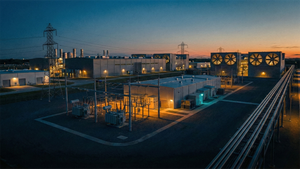BioCardia Receives FDA Breakthrough Device Designation for CardiAMP Cell Therapy System for Heart Failure
BioCardia®, Inc. (Nasdaq: BCDA), a developer of cellular and cell-derived therapeutics for the treatment of cardiovascular and pulmonary diseases, today announced that the U.S. Food and Drug Administration (FDA) has granted Breakthrough Device Designation for the CardiAMP® Cell Therapy System for the treatment of heart failure. It is believed to be the first cardiac cell therapy to receive FDA Breakthrough Device status.
CardiAMP Cell Therapy uses a patient’s own (autologous) bone marrow cells delivered to the heart in a minimally invasive, catheter-based procedure. The therapy incorporates a pre-procedural screening assay to identify patients who may be likely responders, a first for a cardiac cell therapy and designed to enhance patient selection. Eligible patients receive a high dose of cells using an intramyocardial delivery system that has been shown in published literature to present the lowest risk to patients for biotherapeutic delivery1 and to be three to six times more efficient at delivering cells to the heart muscle than other methods.2 This approach allows the patient to be discharged from the hospital the morning after the procedure.
CardiAMP Cell Therapy is designed to potentially stimulate the body’s natural healing response, provoking a beneficial paracrine reaction to repair the heart. This is a different mechanism of action from other therapies that have sought to transform stem cells into new heart cells, a method that has presented patient risks, such as rhythm abnormalities and cell rejection.
“It is exciting for the field of cardiology that the FDA has recognized the potential of a cell therapy to improve the lives of patients struggling with heart failure. Getting this therapy fast-tracked and to patients more quickly than traditional methods would give us new options and a greater armamentarium to assist our patients in need. I am enthusiastic about completing the U.S. pivotal trial of the CardiAMP Cell Therapy to build the body of evidence necessary to support this accelerated FDA path,” said Carl Pepine, MD, MACC, Professor in the Division of Cardiovascular Medicine at the University of Florida.
The CardiAMP Cell Therapy Heart Failure Trial is a U.S. pivotal trial currently enrolling patients to evaluate the effectiveness of the CardiAMP Cell Therapy System in improving survival, reducing major adverse cardiac events, enhancing functional capacity, and improving quality of life for patients. The trial is scheduled to have a prespecified formal Data Safety Monitoring Board Review which will assess both safety and futility of the trial on February 8, 2022. Results from this review should be available in the days following the review.
The CardiAMP Cell Therapy System has shown no incidence of mortality at one year in its Phase II trial or in the 10-patient roll-in cohort from the Phase III trial that is currently enrolling. Earlier studies of the therapy have shown statistically significant improvement in exercise tolerance and quality of life.
“We thank the FDA for granting Breakthrough Device Designation to the CardiAMP Cell Therapy System and recognizing its potential to provide more effective treatment for heart failure, a major achievement for this unique therapy,” said Peter Altman, Ph.D., President and Chief Executive Officer of BioCardia. “The published results from our clinical trials to date 3, 4. 5,6, 7 have met our high expectations in showing the therapy’s ability to address the loss of heart function in ischemic heart failure. We look forward to completing our Phase III trial and engaging with the FDA as we move closer to the prospect of benefiting patients whose lives are severely impacted by this disease.”
He continued, “Past trials of cell therapy delivered intramyocardially showed benefit in improving heart function, but they did not reach statistical significance. We learned from these earlier approaches and added three elements that we believe improve our probability of success: a pre-procedural diagnostic for patient selection, a higher target dosage of cells, and a proprietary delivery system that has been shown to be safer than other intramyocardial delivery systems and exponentially more successful in cell retention. It is our intention that CardiAMP Cell Therapy could complement and enhance new pharmaceutical approaches to bring greater benefit to patients upon FDA approval.”
The Breakthrough Devices Program is designed to expedite FDA approval of certain novel devices or device-led combination products (products that combine drugs, devices or biological products) that provide for more effective treatment or diagnosis of life-threatening or irreversibly debilitating diseases or conditions.
About Heart Failure
Heart Failure (HF) is a complex clinical syndrome that results from any structural or functional impairment of ventricular filling or ejection of blood. The cardinal manifestations of HF are dyspnea and fatigue, which may limit exercise tolerance, and fluid retention, which may lead to pulmonary congestion and/or peripheral edema. Projections show that the prevalence of HF in the United States will increase 46% from 2012 to 2030, resulting in >8 million people ≥18 years of age with HF8. The CardiAMP Cell Therapy indication of HF with reduced ejection fraction secondary to an ischemic event such as a heart attack, is estimated by BioCardia to account for more than 1.2 million patients in the United States.
About BioCardia®
BioCardia, Inc., headquartered in Sunnyvale, California, is a developer of two biotherapeutic platforms – the CardiAMP autologous bone marrow derived mononuclear cell therapy for cardiovascular indications, and the NK1R+ allogeneic bone marrow derived mesenchymal stem cell therapies for cardiovascular and pulmonary diseases. These platforms underly four product candidates, each with the potential to meaningfully benefit millions of patients. Three of these investigational therapies are enabled by the Company’s proprietary biotherapeutic delivery platforms, which the Company also selectively licenses to other biotherapeutic development firms.
Forward Looking Statements
This press release contains forward-looking statements that are subject to many risks and uncertainties. Forward-looking statements include, among other things, references the Company’s product candidates and expectations for its development programs. Such risks and uncertainties include, among others, the inherent uncertainties associated with developing new products or technologies, regulatory approvals, unexpected expenditures, the ability to raise the additional funding needed to continue to pursue BioCardia’s business and product development plans, and overall market conditions. These forward-looking statements are made as of the date of this press release, and BioCardia assumes no obligation to update the forward-looking statements.
We may use terms such as “believes,” “estimates,” “anticipates,” “expects,” “plans,” “intends,” “may,” “could,” “might,” “will,” “should,” “approximately” or other words that convey the uncertainty of future events or outcomes to identify these forward-looking statements. Although we believe that we have a reasonable basis for each forward-looking statement contained herein, we caution you that forward-looking statements are not guarantees of future performance and that our actual results may differ materially from the forward-looking statements contained in this press release. As a result of these factors, we cannot assure you that the forward-looking statements in this press release will prove to be accurate. Additional factors that could materially affect actual results can be found in BioCardia’s Form 10-K filed with the Securities and Exchange Commission on March 30, 2021, under the caption titled “Risk Factors.” BioCardia expressly disclaims any intent or obligation to update these forward-looking statements, except as required by law.
1 Duckers HJ, Raval A, Pepine CJ, et al. Performance of Helix transendocardial biotherapeutic delivery system after 300 cases. Poster Presentation at TCT Conference 2018
2 Mitsutake, Y. Pyun WB, Rouy D, et al. Improvement of local cell delivery using Helix transendocardial delivery catheter in a porcine heart, Int. Heart J. 58 (2017) 435–440.
3 de la Fuente LM, Stertzer SH, Argentieri J, et al. Transendocardial autologous bone marrow in myocardial infarction induced heart failure, two-year follow-up in an open-label phase I safety study (the TABMMI study). EuroIntervention: Journal of EuroPCR in collaboration with the Working Group on Interventional Cardiology of the European Society of Cardiology. 2011;7:805-12
4 Heldman AW, DiFede DL, Fishman JE, et al. Transendocardial mesenchymal stem cells and mononuclear bone marrow cells for ischemic cardiomyopathy: the TAC-HFT randomized trial. JAMA. 2014;311:62-73.
5Wong Po Foo C, Rouy D, Hare JM, et al. The Transendocardial Autologous Cells in Ischemic Heart Failure Trial Bone Marrow Mononuclear Cells (TAC-HFT-BMC) Randomized Placebo Controlled Blinded Study, World Congress of Regenerative Medicine, 2015.
6 Raval AN, Johnston PV, Duckers HJ, , et al. Point of care, bone marrow mononuclear cell therapy in ischemic heart failure patients personalized for cell potency: 12-month feasibility results from CardiAMP heart failure roll-in cohort. Int J Cardiol. 2021 Mar 1;326:131-138.
7 Raval AN, Johnston P, Phillips J, , et al. High Doses of CD34+ Cells Delivered to Patients in the CardiAMP Cell Therapy Heart Failure Trial, presented at the European Society of Cardiology Heart Failure Annual Meeting, June 2021.
8 Heidenreich, PA, Albert, NM et al; on behalf of the American Heart Association Advocacy Coordinating Committee; Council on Arteriosclerosis, Thrombosis and Vascular Biology; Council on Cardiovascular Radiology and Intervention; Council on Clinical Cardiology; Council on Epidemiology and Prevention; Stroke Council. Forecasting the impact of heart failure in the United States: a policy statement from the American Heart Association. Circ Heart Fail. 2013;6:606–619.
View source version on businesswire.com: https://www.businesswire.com/news/home/20220203005381/en/
Contacts
Media Contact:
Michelle McAdam
Chronic Communications, Inc.
Email: michelle@chronic-comm.com
Phone: 310.902.1274
Investor Contact:
David McClung, Chief Financial Officer
Email: investors@BioCardia.com
Phone: 650-226-0120
More News
View More




Recent Quotes
View MoreQuotes delayed at least 20 minutes.
By accessing this page, you agree to the Privacy Policy and Terms Of Service.